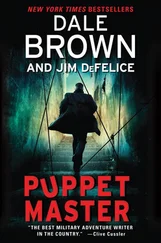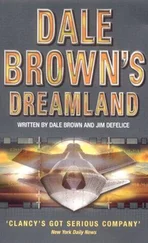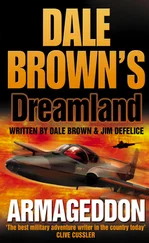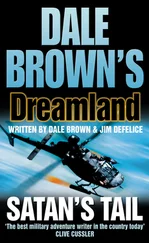The corrupt data stream lasted only tenths of a second, but in that span of time Kingfisher-3’s targeting and identification computers received millions of lines of computer code from the Russian computers on Socotra Island. Ninety percent of the code was rejected as corrupt or irrelevant data, but 10 percent was accepted and processed as valid commands. The commands ran the gamut: Some were orders to shut down, power up, reboot, or do all three at the same time; others were for repositioning and realignment with unrecognizable or illogical references such as the moon or some other celestial body instead of with Earth; others were for immediate engagement of nonexistent targets.
Within minutes of trying to sort out all of the contrary or unexpected commands, the spacecraft simply rejected all commands, safed and locked all of its weapons, reported itself as out of service, and shut itself down.
THE WHITE HOUSE OVAL OFFICE
A SHORT TIME LATER, EARLY EVENING WASHINGTON TIME
“What the hell is it now?” the president asked as he strode into the Oval Office. He drank a full glass of water-he had been in a dinner meeting with his reelection campaign staff, celebrating another primary win, and had a couple glasses of wine, and he hoped the water would dilute some of the alcohol.
“The Reagan carrier group went on battle stations in the Gulf of Aden, sir,” National Security Adviser Conrad Carlyle said. “One of its escort ships, the destroyer Rourke, was participating in a search and rescue for the bomber that was shot down a couple days ago. They found a survivor, but couldn’t pick him up because of low fuel, so they put a rescue swimmer in the water and dispatched another helicopter. The destroyer lost contact with the second helicopter shortly after detecting an unidentified high-speed aircraft heading east toward it.”
The president shook his head in confusion. “So the carrier came under attack?” he asked.
“No, sir,” Turner said. “They lost contact with the second rescue helicopter. The captain of the Reagan must have assumed the helicopter was shot down or collided with the unidentified aircraft and went to battle stations.”
“Did they see this plane attack the helicopter?”
“No, sir. They were out of range. The carrier’s Hawkeye AWACS radar plane detected both the aircraft and the helicopter but did not pick up any distress or warning calls and can’t say for certain what happened. The Hawkeye did pick up some radio traffic between the second chopper and the rescue swimmer, and also detected another helicopter from the west of where the survivor was located.”
“One of ours?”
“No, sir, but by the time a patrol plane from the carrier Reagan got on station, it was gone. The patrol plane searched for it until it got within a hundred miles of the Russian carrier battle group, then turned around.”
“Thank God for that,” the president said. “The last thing we need is for the Russians to shoot down another of our planes. But I still don’t see what the emergency is about. A rescue helicopter went down, and the carrier’s captain suspects something with this unidentified aircraft and goes to battle stations? Does he think the chopper was shot down? Why would anybody shoot down a rescue helicopter?”
“I don’t know, sir,” Carlyle said. “It’s preliminary word, a lot of guesstimates. But I asked that the Navy notify the White House anytime one of their battle groups in the vicinity of the Russian or Chinese carrier groups goes to battle stations for real, so they did. I thought you’d like to know.”
The president nodded, then burped uncomfortably-the sudden flurry of excitement was dumping stomach acid atop the fine dinner and wine he had partially finished, and now it was all turning into sour junk in his guts. “That’s okay,” he said. “Keep me advised.” At that moment the phone rang, and he picked it up, listened, then grunted something in reply. “ Phoenix wants a quick word.”
“What about?”
“Wouldn’t say.” He picked up the phone again. “Ask Mr. Kordus to join us in the Oval Office. He’s upstairs in the residence with the reelection team. Thanks.” Just as he hung up, there was a knock on the Oval Office door, and Vice President Ken Phoenix walked in. “What’s going on, Ken?” the president asked.
The vice president held up a folder. “I have information that proves that the Russians have been sabotaging our Space Defense Force satellites, sir,” he said.
The president’s eyes narrowed with suspicion. “You have information? How did you get it, and I didn’t?” He turned to the national security adviser. “You hear about this, Conrad?”
“No, sir, I haven’t.”
Phoenix ignored the question. “Just a few minutes ago, the Russians sent netrusion signals into a Kingfisher weapon garage, causing it to shut itself down a short time later. The signals were detected originating from a Russian space tracking and intelligence site in the Gulf of Aden, off the coast of Somalia.”
“Answer my question, Ken-how did you get this information? Who is it from?”
“Apparently a nongovernmental group investigating Russian activity in the Gulf of Aden.”
“A ‘nongovernmental group’? Care to elaborate?”
“That’s all I was told, sir.”
“Does this have to do with the commando insertion plan you concocted on that island in the Gulf of Aden…what was it, Socotra Island?”
“You canceled that operation, sir.”
“I canceled all operations in that area, Mr. Phoenix,” the president said. “How did this one come about?”
“I don’t know, sir,” Phoenix replied. “But the results are conclusive: The Russians are definitely targeting Kingfisher weapon garages, causing them to shut down.”
Chief of Staff Walter Kordus entered the Oval Office, and he motioned to National Security Adviser Carlyle that he had a phone call waiting for him. While Carlyle took the call, the president motioned for the papers Phoenix had and quickly flipped through them. “It’s all unsubstantiated stuff, Ken,” the president said, giving the file back to him. “It’s hearsay. No specifics. I think someone is feeding you information you wanted to hear. Besides, it’s moot: I’m shutting down those Kingfisher satellites anyway.” Carlyle hung up the phone loudly enough to get the president’s attention. “What, Conrad?”
“More information on that incident in the Gulf of Aden.” When he noticed Vice President Phoenix’s quizzical expression, he explained quickly: “The Reagan went to battle stations after one of its search-and-rescue helicopters went down.”
“What…?”
“Go on, Conrad,” the president ordered irritably.
“Soon after the second helicopter went down, three emergency satellite beacons were detected. One belonged to the life raft dropped by the first helicopter. We assume it was activated by the rescue swimmer when he saw the second chopper go down.”
“Makes sense. What about the others?”
“They belonged to the crewmembers of that bomber that was shot down.”
“So there were survivors!” Phoenix said.
“The rescue swimmer could’ve activated the beacons on the victims’ life vests,” Carlyle pointed out. “There’s more. The position of the three beacons stayed constant for about fifteen to twenty minutes, and then they were lost…at approximately the same time as the Reagan’s radar plane detected the unidentified helicopter come in from the west.”
“An unidentified helicopter…?” Phoenix exclaimed.
Gardner ignored him. “Lost? You mean, shut off?”
“Military locator beacons are designed so they can be shut off, to avoid crews being tracked by enemy searchers in an escape-and-evasion situation,” Carlyle said. “But EPIRBs carried on ships or life rafts are designed to stay on until the battery runs out, which could be for several days. It’s seawater-activated, waterproof, and designed to float, but if it’s submerged deeper than thirty feet, the signal can’t be heard.”
Читать дальше












